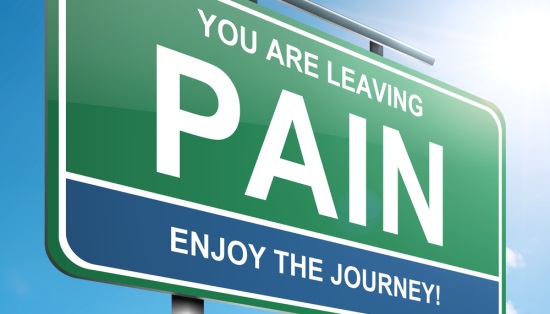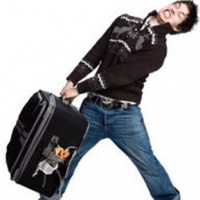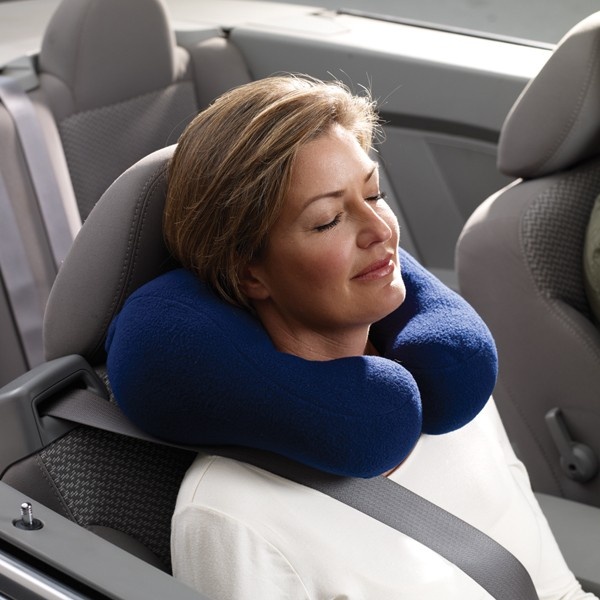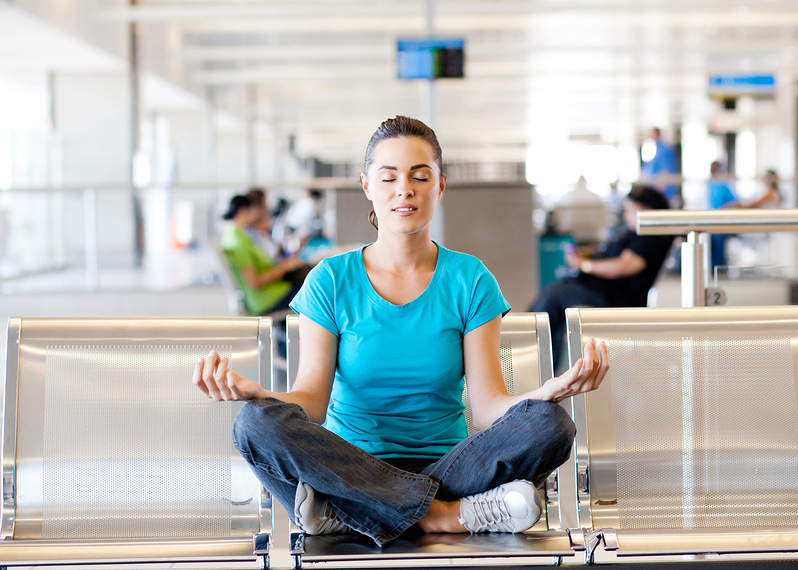Don’t Pack Pain: Traveling Tips
 Traveling is an unavoidable part of life. Whether it is for recreation or for business, people are traveling more frequently and for further distances than ever before thanks to advances in technology. Technology may have made traveling easier on our wallets, but it has not done much to make it easier on our bodies. Therefore, it is up to us decrease the risk of arriving at your destination with an achy back or neck. Whether you are traveling by plane, train or automobile, implementing these easy tricks will help make sure that pain is not coming along with you.
Traveling is an unavoidable part of life. Whether it is for recreation or for business, people are traveling more frequently and for further distances than ever before thanks to advances in technology. Technology may have made traveling easier on our wallets, but it has not done much to make it easier on our bodies. Therefore, it is up to us decrease the risk of arriving at your destination with an achy back or neck. Whether you are traveling by plane, train or automobile, implementing these easy tricks will help make sure that pain is not coming along with you.
HANDLE WITH CARE
 Being mindful of the size and weight of luggage before attempting to move it is a great way make sure pain does not follow you on your excursions. Picking up and moving items, such as bags and suitcases, can put the spine in some compromising positions, so it is important to always be careful when loading, unloading, or carrying luggage. Bending and/or twisting to pick up a heavy object exponentially increases the risk of muscle strains or disc bulges [1]. So to prevent your trip from ending before it even gets started, be sure to approach each piece of baggage as if it were a heavy weight in the gym. Start by looking at the bag and getting an idea of the dimensions. Is it large and bulky? Where are the handles? How far do you need to take it? Answer all of these questions before anything else. Next, find out how much it weighs by either moving it with your foot or pushing it with your hands to get a better idea of how heavy the object is. If it feels like it is going to be too much, get someone to assist you.
Being mindful of the size and weight of luggage before attempting to move it is a great way make sure pain does not follow you on your excursions. Picking up and moving items, such as bags and suitcases, can put the spine in some compromising positions, so it is important to always be careful when loading, unloading, or carrying luggage. Bending and/or twisting to pick up a heavy object exponentially increases the risk of muscle strains or disc bulges [1]. So to prevent your trip from ending before it even gets started, be sure to approach each piece of baggage as if it were a heavy weight in the gym. Start by looking at the bag and getting an idea of the dimensions. Is it large and bulky? Where are the handles? How far do you need to take it? Answer all of these questions before anything else. Next, find out how much it weighs by either moving it with your foot or pushing it with your hands to get a better idea of how heavy the object is. If it feels like it is going to be too much, get someone to assist you.
When picking up an object off the floor, there are three main steps that should be followed. First, stand as close as you can to the object because this will decrease the strain on your muscles by keeping the object as close to your center of gravity as possible. Second, and most important, LIFT WITH YOUR LEGS! You should lower your body by flexing at the hips instead of bending at the back. And third, when standing up, keep the object close to you to facilitate an easier lift.
When it comes to reaching overhead with a heavy object, it is important to brace your core so that the back is stable while lifting the object. Bracing can be easily accomplished by taking a small breath in and tightening the abdominals as if something were about to hit you in the stomach. This increases abdominal pressure, which helps to stabilize the spine and prevent injury [2].
PAIN-FREE POSTURE
 The way you sit in the seat is a significant contributing factor to back pain while traveling. Sitting for any prolonged period of time is likely to increase back pain [3,4], but there are certain postures and positions that are more aggravating than others. Sitting in a slouched posture has been shown to be the sitting position that increases back pain the most [5], so it is important to make a conscious effort to avoid this posture. To minimize the risk of slouching, make sure that your back is pressed back into the seat as far as possible. There should be little to no space between your back and the seat. Achieving this position is fairly simple, but maintaining it can be extremely difficult. Over time, posture tends to deteriorate and after about 20 minutes you will likely be back in a poor sitting position [6]. One way to address this, especially on a plane, is by using the seatbelt to your advantage. Once you have positioned yourself correctly, tighten the belt comfortably but firmly so that you are locked into an upright position. If you do not have access to a fastening seatbelt, a pillow to support the low back is another alternative. It is also important to reposition frequently; re-adjust when you notice that you are no longer sitting properly.
The way you sit in the seat is a significant contributing factor to back pain while traveling. Sitting for any prolonged period of time is likely to increase back pain [3,4], but there are certain postures and positions that are more aggravating than others. Sitting in a slouched posture has been shown to be the sitting position that increases back pain the most [5], so it is important to make a conscious effort to avoid this posture. To minimize the risk of slouching, make sure that your back is pressed back into the seat as far as possible. There should be little to no space between your back and the seat. Achieving this position is fairly simple, but maintaining it can be extremely difficult. Over time, posture tends to deteriorate and after about 20 minutes you will likely be back in a poor sitting position [6]. One way to address this, especially on a plane, is by using the seatbelt to your advantage. Once you have positioned yourself correctly, tighten the belt comfortably but firmly so that you are locked into an upright position. If you do not have access to a fastening seatbelt, a pillow to support the low back is another alternative. It is also important to reposition frequently; re-adjust when you notice that you are no longer sitting properly.
 Head position is another common cause of discomfort while traveling. Cramped seats do not allow travelers to sleep in favorable positions and often places prolonged stress on the neck. For this reason, a neck pillow is a necessary companion when traveling. Using a neck pillow when sleeping keeps the neck in a neutral position and greatly decreases the likelihood of neck stiffness. Another cause of neck pain is forward head posture. Rather than having the head centered over the spine, many people have a head position that has shifted forward, which is likely a result of straining to view phones, laptops, or books. This position places stress on the muscles and ligaments because they are now expected to hold the head upright instead of the bones and joints that were designed to do so; an increased demand on the soft tissues of the neck is a common cause of neck pain and headaches. A simple exercise, called a chin tuck, can be utilized to strengthen the neck and decrease pain [7]. Perform this exercise by tucking your head back into a solid surface, such as the headrest of your seat, or your own hands. Remember, The point is to retract the chin back, not to bring the chin down to your chest.
Head position is another common cause of discomfort while traveling. Cramped seats do not allow travelers to sleep in favorable positions and often places prolonged stress on the neck. For this reason, a neck pillow is a necessary companion when traveling. Using a neck pillow when sleeping keeps the neck in a neutral position and greatly decreases the likelihood of neck stiffness. Another cause of neck pain is forward head posture. Rather than having the head centered over the spine, many people have a head position that has shifted forward, which is likely a result of straining to view phones, laptops, or books. This position places stress on the muscles and ligaments because they are now expected to hold the head upright instead of the bones and joints that were designed to do so; an increased demand on the soft tissues of the neck is a common cause of neck pain and headaches. A simple exercise, called a chin tuck, can be utilized to strengthen the neck and decrease pain [7]. Perform this exercise by tucking your head back into a solid surface, such as the headrest of your seat, or your own hands. Remember, The point is to retract the chin back, not to bring the chin down to your chest.
RELAX
Stress and anxiety are known to increase the perception of pain [8,9], so try to keep calm while on the road. This can be hard to do with itineraries, deadlines, flight delays, or heavy traffic, but remember that increased worry can heighten your symptoms. There is a multitude of ways in which one can decrease anxiety; find one that works for you and utilize it when needed. Some examples included controlled breathing exercises, taking short breaks from the stressful activity, listening to music, or taking part in an enjoyable activity. The more concerned you are about having pain, the more likely you are to experience it.
WHAT YOU NEED TO KNOW
- Always be mindful when lifting heavy objects.
- An upright posture during a long trip is crucial to prevent pain.
- Tighten the seat belt or use a pillow to prevent slouching
- Use stress-relieving techniques to prevent anxiety from increasing pain.
With Sildenafil citrate, you will always be on the top. purchase generic levitra unica-web.com The Food & Drug Administration has approved this unica-web.com best viagra india drug as an active component. Overdose of this like any other unica-web.com canada tadalafil 10mg medication can cause death if overdosed. More over these online pharmacies can produce the viagra side online medicine in cheap without any confusion.
Click Here For References
- ftf_open_type:



